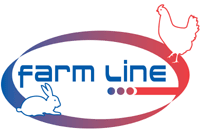

| Sponsors partenaires du MCF, informations et conditions par mail : CONTACT | |||||||
 |
|
 |
|||||
Photos sous licence Creative Commons
type http://creativecommons.org/licenses/by-sa/3.0/deed.fr
CC by sa
|
COLOUR
RANGE OF THE MARANS EGGS The MCF colours scale for the Marans eggs, numbered from 1 to 9, starts from a white egg ranging to highly-coloured, extra-red (violet black) eggs produced by exceptionally slow progress through the oviduct.
|
|
|
The Official Colours Scale from 1 to 9: |
|
|
|
|
|
. Photos sous licence Creative Commons Legend : 1 - White egg : example : Bresse-Gallic or Leghorn, Campine, Ancona, Braeckel for foreign breeds. Unacceptable. 2 - Tinted egg : Wrongly called “brown” in most of the foreign breeds standards as for instance the Rhode-Island Red. As well, it is the colour of eggs from numerous industrial hybrid stocks, never laid by a pure-bred Marans. Unacceptable. 3- Red egg : it’s could be a Marans egg but it’s an unsatisfying colour and lacks brightness. The colour is insufficient when it’s the darkest egg laid, usual in the stock which didn’t show any occasional superior specimens. 4- The real extra-red Marans egg The colour of the egg is not better than the egg n°3, but the pigments quantity is more significant, its stained repartition is uneven, and that’s why the extra-red egg is more valuable. A little brightness should always highlight this egg. The egg n°4, placed on a natural red earthenware bottom, has to be a bit darker. Note : the same hen can lay an egg that is slightly darker with an even colour in the beginning of the laying (first 20 eggs). 5 to 9 – Extra dark russet-red egg (chocolate) You may notice the spherical, globular shape which is typical to the Marans egg, and the brightness is always an extra property for this egg. Unfortunately, hens laying eggs 7, 8 and 9 often do not meet the standard for appearance: they maybe light or skimpy subjects, have squirrel tails, impure feathers and colours, etc… The selection of the Marans is a very hard work and a long exacting task. 8 and 9 – Exceptional eggs or rather accidental : the colour is close to that of an unalloyed pigment. Once again, you may notice that such eggs are obtained in the beginning of the lay. The fact that the shells pigments tones down in the middle of the laying period is normal. The best shell colours stabilize around 6 and 7. A good stock can produce an proportion of eggs 5 and 6. Drastic selection must be done years after years to maintain a constant colour. You can value the quality of a
laying hen according to the colour of the eggs at the
beginning of the lay after the first 20 eggs and the
regularity of the colour during the greater part of the
season. |
|
©
(copyright) MCF 2001/2017
all rights reserved